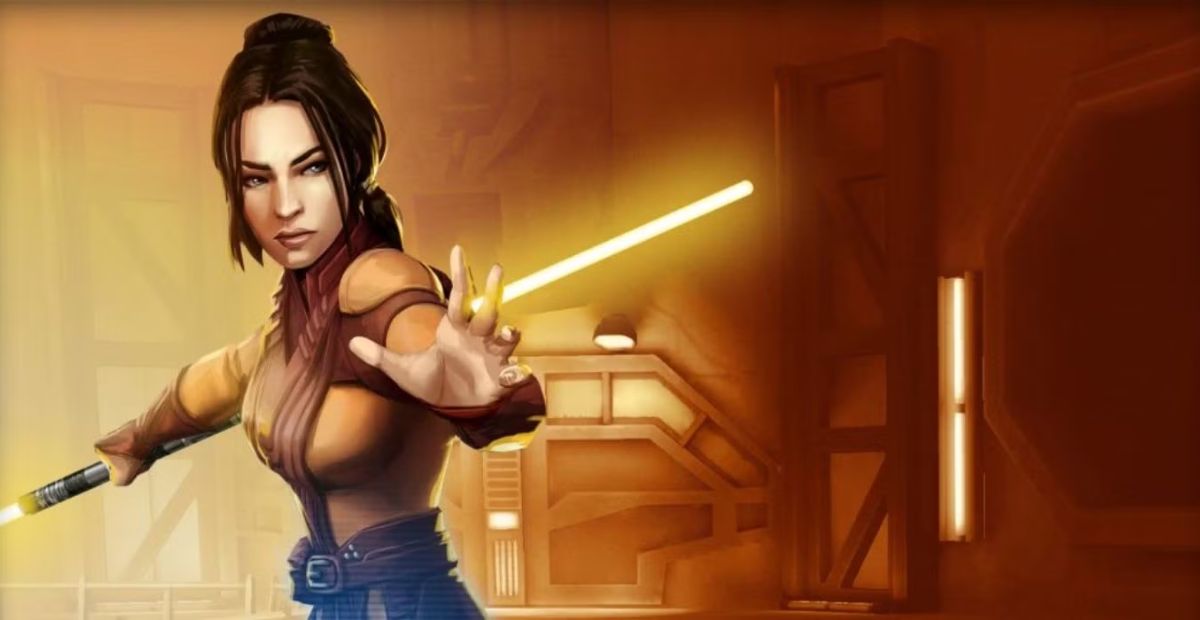When we think about the Jedi who gave the Sith the most trouble, names like Mace Windu or Yoda probably come to our minds. But there’s an entire branch of the Jedi Order that the Sith feared in a very different way—not because of overwhelming power, but because of their ability to uncover secrets, operate in silence, and strike precisely where it hurt most.
We’re talking about the Jedi Sentinels. And here are 5 key facts about them—and why the Sith had every reason to be afraid.
What Exactly Is a Jedi Sentinel?
Before we explore the facts about Jedi Sentinels, let’s break down who they actually were. To be clear, in current Star Wars canon, there’s no official explanation of Jedi being divided into different paths the way they were in Legends. But in Star Wars Legends, the Jedi Order had clear classifications—Jedi Consulars, Jedi Guardians, and Jedi Sentinels.
Jedi Sentinels stood out because of their balanced approach. They weren’t focused entirely on combat like the Guardians, or purely on the Force and diplomacy like the Consulars. Instead, Sentinels operated in between—blending lightsaber skills with practical knowledge and fieldwork.
They were often sent outside the Jedi Temple, working among civilians, uncovering corruption, and tracking down traces of the dark side. Many developed specialized talents in stealth, technology, investigation, and intelligence. Some even took on specific titles depending on their roles:
- Jedi Artisan – focused on technology and engineering.
- Jedi Investigator – solved crimes and uncovered threats to the Republic.
- Jedi Recruiter – searched for Force-sensitive individuals across the galaxy.
- Jedi Shadow – hunted down Sith and dark side artifacts.
- Jedi Temple Guard – defended the Temple and its members.
- Jedi Watchman – maintained peace in specific sectors.
- Jedi with additional specialization – focused on unique talents tailored to missions.
In short, Jedi Sentinels were the Order’s most versatile branch—problem-solvers who could fight when needed, but were just as valuable in the shadows. And that versatility made them a nightmare for the Sith.
1. They Worked Undercover in the Shadows
We usually picture Jedi in robes, walking openly through the galaxy with lightsabers on their belts—but Jedi Sentinels didn’t always fit that image. Unlike most Jedi, who operated openly and often from the Temple, Jedi Sentinels were trained to blend into the everyday world. They worked quietly in cities, among civilians, criminal organizations, and even government circles—living double lives if needed. Some posed as regular citizens, others as investigators or intelligence agents.
This low-profile lifestyle made them a nightmare for the Sith.
While Sith Lords thrived on secrecy and manipulation, Sentinels were trained to spot signs of dark side corruption hiding in plain sight. They didn’t wait for a crisis to come to the Temple—they rooted out problems before they escalated. Their ability to track, infiltrate, and expose threats made them unpredictable and hard to defend against.
An example of a Jedi Shadow is Celeste Morne. She was a Jedi Knight who served during the time of the Old Republic and was part of a secret group of Shadows formed under the guidance of Jedi Master Krynda Draay. This group operated covertly, with their records deleted or deaths falsified to maintain secrecy. Celeste’s primary mission was to locate and eliminate Sith artifacts and dark side influences. Notably, she was tasked with securing the Muur Talisman, a powerful Sith artifact. During this mission, she became the talisman’s unwilling guardian, leading to her being placed in stasis for centuries until her eventual awakening during the time of the Galactic Empire.
2. They Were Trained to Function Without Relying Heavily on the Force
One of the most unique things about Jedi Sentinels was that they didn’t lean on the Force as a crutch. Unlike Consulars, who relied on deep Force knowledge or Guardians, who used the Force to enhance their combat, Sentinels were trained to operate effectively even when the Force couldn’t give them answers.
They believed the Force had limits—and they weren’t afraid to admit it.
That’s why many Sentinels developed practical skills in areas like slicing, surveillance, demolitions, mechanics, and medicine. They could break through a security system, repair vital equipment, or investigate crimes without needing a Force vision to guide them.
One quote from the Jedi recruiter Morrit Ch’gally sums up their philosophy perfectly:
“In my view, it’s possible to know too much about combat and the Force—if it means you know next to nothing about intelligence gathering, computer slicing, technological surveillance, or espionage.”
This comes from The Jedi Path: A Manual for Students of the Force—a sourcebook from the Legends continuity that dives deep into Jedi traditions and roles.

This mindset made them extremely resilient and unpredictable. If a Sith tried to cloud the Force to hide their presence—something they often did—it wouldn’t completely throw off a Sentinel. They’d just fall back on what they’d trained for in the real world.
3. Jedi Sentinels Were Known for Their Yellow Lightsabers
We don’t always associate lightsaber colors with specific Jedi roles, but for Sentinels, the yellow blade became a clear symbol of who they were. While any Jedi could wield any color, yellow was most often tied to this path—representing the balance between combat ability and practical wisdom.
Sentinels were trained in a wide range of skills, but their precision and discipline in combat made them ideal candidates for roles like the Jedi Temple Guard. These anonymous protectors of the Jedi Temple wore emotionless masks, wielded yellow double-bladed lightsaber pikes, and lived by the strict discipline that defined the Sentinel path.
More than just warriors, Sentinels were trained to recognize threats that couldn’t be handled with the Force alone. When it came to high-level security, slicing into systems, or disabling traps, they were the Jedi to call. As the book describes:
“The security expert is known for his or her ability to disarm traps and silence alarms. This Jedi recognizes the Force’s limitations when it comes to technological countermeasures and has saved many missions and lives by studying how to disrupt them. A security expert can be the difference between a successful infiltration and a lifelong prison sentence in the flame-dungeons of Nal Hutta.”
4. Jedi Watchman Kept Entire Star Systems in Check
One of the most underrated roles in the Jedi Order was the Jedi Watchman—and surprise, it fell under the Jedi Sentinel path. These weren’t Jedi assigned to one mission or a temporary assignment. Watchmen were given full oversight of entire planets or even entire star systems, often living there for years to monitor peace, justice, and any potential dark side activity.
They didn’t just show up when something went wrong—they were already there, watching from within.
This role made them especially dangerous to the Sith. While other Jedi might be deployed after a crisis had already started, Watchmen could sense the early signs of unrest and act before the threat ever grew. They built trust with local governments, had deep knowledge of regional politics, and often worked alone, blending into the population while keeping tabs on everything.
If a Sith cult tried to take root, or corruption began to spread, a Jedi Watchman was already in position—quietly dismantling the threat before it had a chance to grow. And because they didn’t operate out of temples or rely on backup, they were hard to predict and even harder to track down.
5. Even After the Jedi Purge, Sentinels Were the Hardest to Eliminate
When Order 66 was executed, the Sith wiped out most of the Jedi in one swift move. But not all Jedi were caught off guard—and not all of them were out in the open. That’s where Jedi Sentinels had the advantage.
Because they often worked undercover, off-world, or in non-military roles, many Sentinels weren’t near the front lines when the clones turned. They weren’t stationed at temples or surrounded by clone battalions. They were in cities, remote regions, or operating solo—hidden in plain sight.
And that made them extremely hard to track.
Darth Sidious himself suspected that many of the Jedi who slipped through the cracks were Sentinels. Their ability to blend into civilian life, survive independently, and use real-world skills made them ideal long-term survivors. Some became quiet vigilantes, others simply vanished into the underworld. But their training ensured that they could continue fighting even without support or resources.
To the Sith, this was more than just annoying—it was dangerous. Because as long as even one Sentinel remained out there, the Jedi legacy was still alive… and watching.
Because as long as even one Sentinel remained out there, the Jedi legacy was still alive… and watching.
And that was the Sith’s worst fear.
The Sith believed they had won. The Jedi Temple was in ruins, the Council was gone, and Anakin Skywalker had become their enforcer. But they also knew the truth: so long as even a single Jedi remained—especially one as resourceful, adaptable, and elusive as a Sentinel—their rule was not secure.
The Sith had risen from the shadows once before, and they knew better than anyone how dangerous a survivor could become over time.
To the Sith, a surviving Sentinel wasn’t just a loose end—it was a symbol of everything they had failed to destroy. Because if the Jedi weren’t truly extinct… then the Sith were never truly safe.

